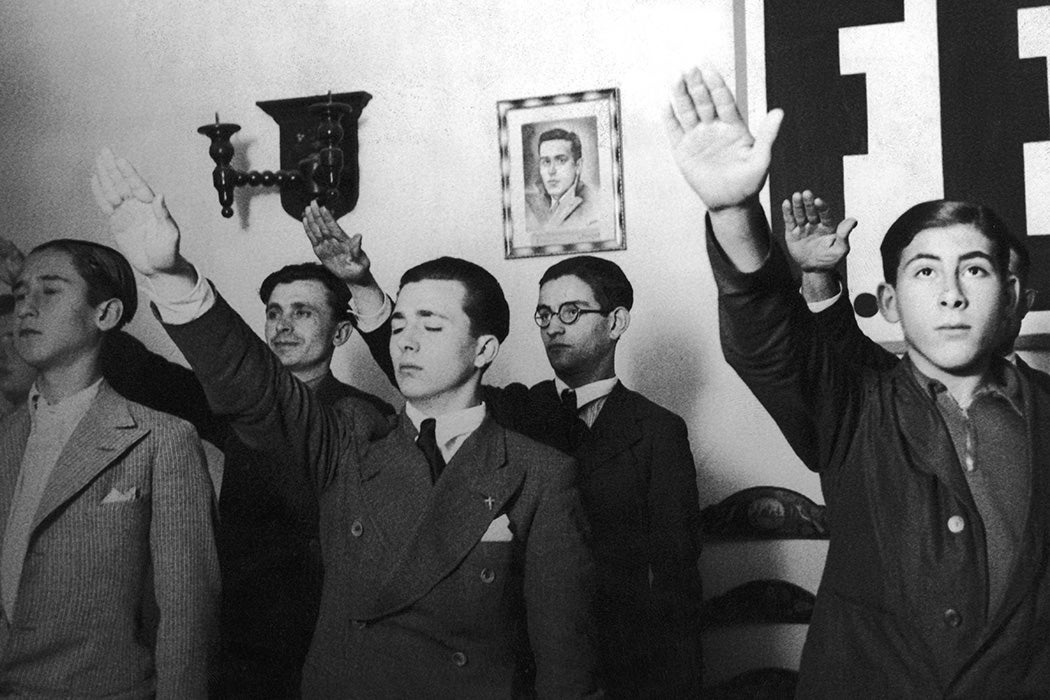National myths are subject to revision, sometimes remarkably quickly. Beginning in the mid-1930s, fascist Spain overturned its own foundational story extraordinarily rapidly, and against existing scholarly consensus. This revisionist project extended throughout the nation’s tumultuous mid-twentieth century.
Classical studies researchers Aarón Alzola Romero and Eduardo Sánchez-Moreno explore these topsy-turvy shifts in how Spanish scholars interpreted the Iberian Peninsula’s Iron Age (c. 800 BCE–50 CE). From the turn of the twentieth century to the mid-1930s, historians and archaeologists called the people who lived there “Iberians,” postulating a non-Indo-European culture, unlike most of the rest of Europe. The distinctiveness was a point of pride to modern Spaniards.
But, as Alzola Romero and Sánchez-Moreno argue, with the ascension of the fascists under Francisco Franco, who began his rebellion against the Spanish Republic in 1936, Spain’s official history was brought into line with myths of “Aryanism” and “pan-Celticism,” creating an Indo-European past that sat neatly alongside Nazi German mythology. Spain’s Iron Age ancestors were reimagined as a southeastern extension of a unified people who swept through Europe. The specifically racial connections to fanciful Aryans/Celts would become the new, official, point of pride.
Under Franco, write Alzola Romero and Sánchez-Moreno, a “pan-Celtic” model “was forged on multiple fronts: political, archaeological, linguistic, art historical, folkloric.” Francoist “representations of Spain’s Celtic origins” went against “much of the existing archaeological and palaeolinguistic evidence at the time,” but nevertheless became the official version of history because the fascists controlled not just the state but academic and heritage institutions as well.
The fascists’ conception of Spain, based on a racial and cultural unity, also suppressed regional differences, as in the Basque country and Catalonia. Making all of Spain “Celtic” whitewashed the complexities and differences, the multi-ethnic mosaic underlying centuries of migration. “In order to achieve this, the Spanish national myths had to be rewritten.”
It’s important to note that not everybody fell into line: “a number of scholars refused to conform to these gross distortions of the past and denounced—with varying degrees of vociferousness—the illegitimate manipulation of the country’s history.”
Weekly Newsletter
What’s so remarkable, as Alzola Romero and Sánchez-Moreno detail it, is just how quickly this all happened—and how just as swiftly the national history was rewritten once again after 1945. The myth of Aryan connections, of a Europe-wide Celtic unity, came up against the definitive defeat of the Nazis and their specious racial notions at the end of World War II.
With the Axis as a model quite literally in ruins, Franco’s archeologists and historians revised the past once again. The Celtic mythology was swept aside to concentrate on a later period of Spain’s history. In the post–World War II era, Spain’s glorious past was specifically transformed into a Catholic one, uniting a deeply reactionary church with a deeply reactionary state. The Celts were replaced by myths of the Reconquista against the Moors and the globe-spanning Catholic empire founded by Ferdinand and Isabella.
Wherever you go, “glorious pasts” are largely fictional. Spain shows how easy it has been to rewrite such national fictions to match current conditions and current needs.
Support JSTOR Daily! Join our new membership program on Patreon today.







